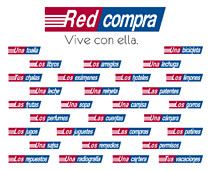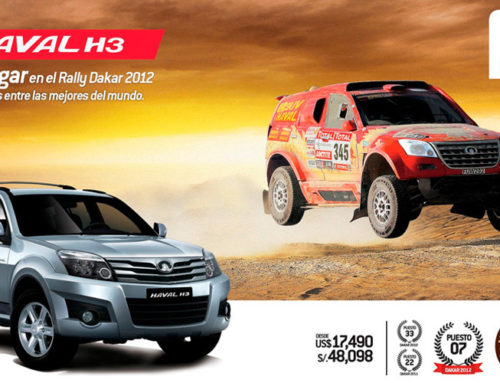The Chilean Marketing Communication Campaign
The Chilean company Transbank was thinking in a subprime post-crisis campaign for their debit card service Redcompra (something like “purchase network”) near the summer season of 2009. One of the major reasons to develop it was the constant awareness they had to make with the brand; people did not use the debit card because they did not “remember” to use it, and the economy reactivation opportunity. In this context the summer campaign had to be aligned with brand´s strategic concept of “essential” and “indispensable” for the target market, which meant make it equivalent to the car keys, mobile phone or wallet.
Another important issue was to generate a constant “noise” strategy for no less than 3 month, mainly because of the “remember” issue and the characteristic of the target group: male and female from 25 to 64 years old, from the AB and C socio economic groups (EA, 2010) a highly requests group, with full options of payment methods like cash, credit cards or retail and supermarket cards who share the higher levels of advertising investment in Chile.
The objectives of the campaign were to increase by 10% all the communicational rates, like top of mind, preference and brand´s adoration, also the company had to transform this awareness and remembrance in sales, raising them an additional 5%, reaching a 23% annual.
To develop the campaign Transbank took into account that Redcompra was a mature brand, with total knowledge from customers but in low remembrance category. That is why they opted to use only outdoors and in-store media, as closest to the customers that could be, transforming the logotype in “purchase opportunities”. The idea was to generate a direct link between the purchase and the debit card usage. Redcompra´s logo was the vehicle of communication, transmitting the product or services that customers could buy.
The strategy was to attack cash payments showing ads with low value products, highlight everyday items and establish payments for new services, like health or education, placing the outdoor ads in strategic point of sale, purchase centers or high traffic places.
Examples were radiographies outside a clinic, a fish in the restaurants sector or nappies near a drugstore (http://www.flickr.com/photos/festivalachap/5247024333/in/photostream). The second criteria was to associate consumption moments with especial days or events (Christmas, vacations or ice-creams), finally the third criterion was the creative execution itself, for example some graphics had particular shapes like a home iron with a crumpled cloth or an outdoor advertising pallet simulating a broken window for a pane of glasses. The brand´s logo was used but replacing the name Redcompra with the key concept. The campaign considered more than 100 different topics, rotating geographically in the 3 months.
Finalizing the campaign, the results were large better than the expected, the sales climbed up to 178% (remember that the goal was a 23% increase). Regarding to the communicational rates, they all passed the objectives by almost 120%, being the “preference” the higher with a 135% accomplishment.
Like some customers commented afterwards: “the message is very clear, you can buy everything you want” (EA, 2010).
South Africa, differences and similarities with Chile
The country of South Africa is located in the southern tip of the African continent, has a 1,2 million square kilometers territory, slightly less than twice the size of US State Texas. Counts almost 50 million multi-ethnical population with diverse cultures and languages, despite that, English is used as the common language in public and business relations. About 79% of the populations are black Africans, 10% white and the rest colored with a literacy of 86% and a medium age of 25 years (IM, 2012).
We see that Chile is ethnically more homogenous that South Africa, having a large Spaniard-native mixed population. They both share the similarity of being middle-income nations, with high economic growth in the last decades.
South Africa can be considered an emerging nation with a GDP per capita (ppp) of almost 11,000 up to 2012, standing as the 26th economy of the world and the biggest in the African continent. Has abundant supply of natural resources, high mining and industrial sectors development, with a well-performed financial, legal, communications, energy, and transport sectors, within the 18th largest stock exchange market in the world, being the service sector the one with the major weight in the country´s GDP with the 66% (TWF, 2012). This is very like Chile, which also has a great developed financial system and an increasing influence of the service area, specially the trading commerce.
In the telecommunication arena, the penetration of mobile phones as reached more than the 100%, compared with the low showed by the fixed-line system (IM, 2012). By the other hand, internet has shown a great development in the last years, according to the World Wide Worx, almost the 40% of urban South Africans and 27% of rural users are browsing the internet on their phones (WWW, 2011). In comparison, Chile has a higher mobile voice with a 130%, but similar penetration of mobile internet (EIT, 2012).
Adaptation of the Campaign to South Africa
As we saw, South Africa is considered in between the emerging countries with enormous potential to be a develop nation in the future just as Chile, also they share a well-developed electronic banking infrastructure with a wide range of opportunities for card holders. For example, In South Africa Visa and MasterCard are accepted by about 80% of the retailers and restaurants (Economy Watch, 2010).
By the other hand, South African consumers are getting more comfortable by buying with their debit cards. According to the Global Payment Tracking Survey 2011 (VISA, 2012), this type of cards meant the 42% of the whole card market, making consumers spend more on their cards. In the Chilean case, this rate goes up to almost 56% (SBIF, 2012).
Another important issue to consider for the adaption of the campaign is that South Africa has a 20% of banked individuals that are not cardholders (VISA, 2012), making this market far from the Chilean´s market maturity with more than 33,5 million credit, debit or retail cards (SBIF, 2012), almost 2 cards per capita.
Taking all this information in consideration, the campaign has to be almost the same, but has to take into account that besides the awareness and use remembrance of the Chilean campaign, in South Africa the product it not as mature, that means reinforcing the existence of the product and then the universality of use. The target market will be expanded to the middle class, not only the AB and C socioeconomic groups, because we need a critical mass.
We will communicate the same values of the Chilean campaign, the direct link between the purchase and the debit card usage, intervening the logotype transforming it in a purchase opportunity. As we are going to reach a broader target audience and the product is not a completely mature, radio will be used along with the outdoor and point of purchase advertising. As unlike TV that doesn´t reach all the country, the radio has a well-developed mix of public and private radio stations at the national, regional, and local levels (TWF, 2012). That is why this media will give the awareness of the existence of the product beyond credit cards and the opportunities to use it. Another complementary media will be the mobile phones, which are wide used in South Africa and are the principal tool for communications, text messages and special mobile sites will be developed.
The outdoor ads will be used near point of purchase and traffic, but in addition we will use some big ones in rural places. Finally and more important is to create the “use” remembrance, that is why dressing the points of sales is critical, the customers take the election of the payment methods there.
The message will be “You can buy everywhere, everything you want. Get a debit card and use it”.
References
EA (2010). Cómo ganaron. Las campañas de marketing más efectivas. Effie Awards. Retrieved on August 22, 2012 from http://www.effie.cl/revistas/comoganaron2010.pdf
EIT (2012, May). Estadísticas de la Industria Telecomunicaciones. Gobierno de Chile. Retrieved on August 22, 2012 from http://www.subtel.gob.cl/
TWF (2012, July 31). South Africa. The World Factbook. Retrieved on August 22, 2012 from https://www.cia.gov/library/publications/the-world-factbook/geos/sf.html
IM (2012). South Africa. Index Mundi. Retrieved on August 22, 2012 from http://www.indexmundi.com/south_africa/
SA (2012). SouthAfrica.info. Retrieved on August 22, 2012 from http://www.southafrica.info/
WWW (2011). The Mobile Internet in South Africa 2011. Retrieved on August 22, 2012 from www.worldwideworx.com/
Achap (2010). XI Festival de Publicidad. Retrieved on August 22, 2012 from http://www.achap.cl/festival2010/minisitio/fes_gf_gan.php
Redcompra (2010). Oro. Paga todo con Redcompra. BBDO. Retrieved on August 22, 2012 from http://www.flickr.com/photos/festivalachap/5247024333/in/photostream
TR (2012). Transbank S.A. Profile. Retrieved on August 22, 2012 from http://www.bnamericas.com/company-profile/en/Transbank_S,A,-Transbank#nogo
SBIF (2012). Información financiera. Superintendencia de Banco e Instituciones Financieras Chile. Retrieved on August 23, 2012 from http://www.sbif.cl/sbifweb/servlet/InfoFinanciera?indice=4.1&idCategoria=564&tipocont=0
VISA (2012, March 29). Growth in Debit usage as South Africans look to manage their money more carefully. Retrieved on August 23, 2012 from https://www.visa.co.za/cms/blog/post/growth_in_debit_usage_as_south_africans_look_to_manage_their_money_more_carefully
Economy Watch (2012, October 6). South Africa Credit Cards. Retrieved on August 23, 2012 from http://www.economywatch.com/south-africa-credit-cards/






Leave A Comment